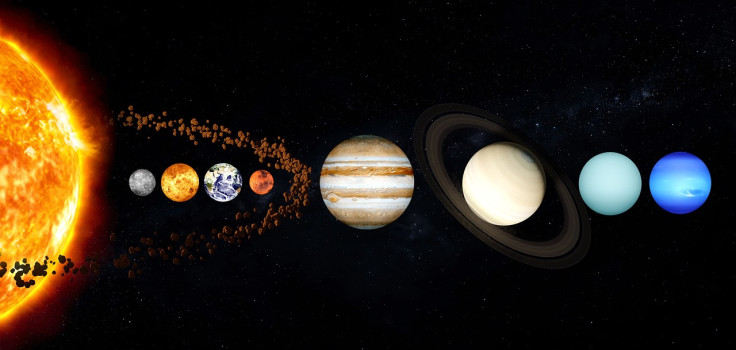UAE's Space Mission To Explore Asteroid Belt Between Mars And Jupiter For Future Resource Extraction
KEY POINTS
- The UAE will launch the MBR Explorer to space in 2028
- The spacecraft will travel 10 times as much as the Hope Probe, said UAE's vice president
- It will explore seven asteroids in the belt and attempt to land on 269 Justitia to observe the rocks
The UAE has unveiled the details of its next space mission, which will see a 2,300-kg autonomous spacecraft being sent to an asteroid belt between Mars and Jupiter to lay the ground for resource extraction in the future.
The project, dubbed the Emirates Mission to the Asteroid Belt, will launch a spacecraft called MBR Explorer, which is named after the vice president and ruler of Dubai, Sheikh Mohammed bin Rashid, in 2028.
Vice President Sheikh Mohammed took to Twitter on Monday to announce the details of the mission.
"Praise be to God, we launched at Qasr Al Watan the scientific details of one of our most important projects in the field of space, 'The Emirates Project to Explore the Asteroid Belt.' The project will last 13 years. 6 years for development and 7 years for an exploration journey. During which the UAE spacecraft MBR Explorer will travel 5 billion kilometers bypassing Mars to explore 7 asteroids and land on the last asteroid in 2034," he wrote.
بحمدالله أطلقنا في قصر الوطن التفاصيل العلمية لأحد أهم مشاريعنا في مجال الفضاء "مشروع الإمارات لاستكشاف حزام الكويكبات " . المشروع يستمر 13 عاماً.. 6 سنوات للتطوير و7 سنوات رحلة استكشاف.. ستقطع خلالها المركبة الاماراتية MBR Explorer ٥ مليار كيلومتر متجاوزة كوكب المريخ لاستشكاف… pic.twitter.com/C0peR7JAMe
— HH Sheikh Mohammed (@HHShkMohd) May 29, 2023
"The Emirates project to explore the asteroid belt is a huge national scientific project... and a project my research and global knowledge are unique. It will include the establishment of private Emirati companies in space technology, the establishment of a ground control center for deep space missions, and the training of new Emirati cadres in this sector," he added.
Sheikh Mohammed also noted that the spacecraft will travel 10 times as much as the Hope Probe.
"The UAE can fly five billion kilometers away in space for one reason: its belief in its youth and its empowerment of its citizens," he said.
The spacecraft will explore seven asteroids, including the 10253 Westerwald, 623 Chimaera, 13294 Rockox, 88055, 23871, and 59980. After exploring them, it will attempt to land on 269 Justitia and use two cameras and two spectrometers to observe the space rocks.
The asteroid belt reportedly contains $700 quintillion worth of minerals, including gold, nickel and iron, The National reported.
The UAE first announced its mission to the asteroid belt in 2021, although details about the spacecraft and the mission's goals were scarce at the time.
In a statement to The National, project director Mohsen Al Awadhi said the mission will be developed by the Laboratory for Atmospheric and Space Physics at the University of Colorado Boulder alongside private companies in the Emirates.

© Copyright 2023 IBTimes AE. All rights reserved.






















